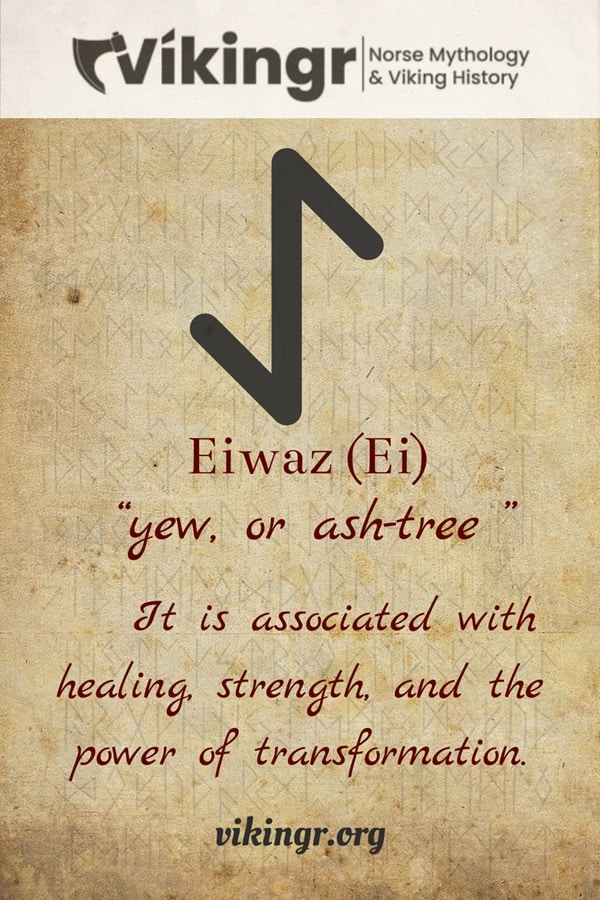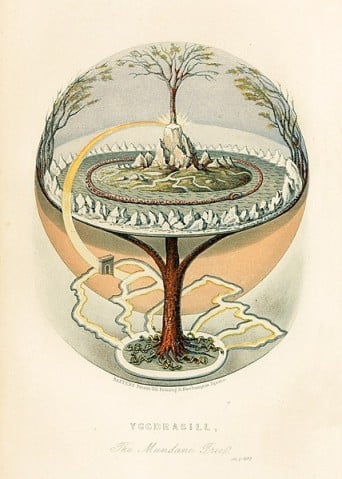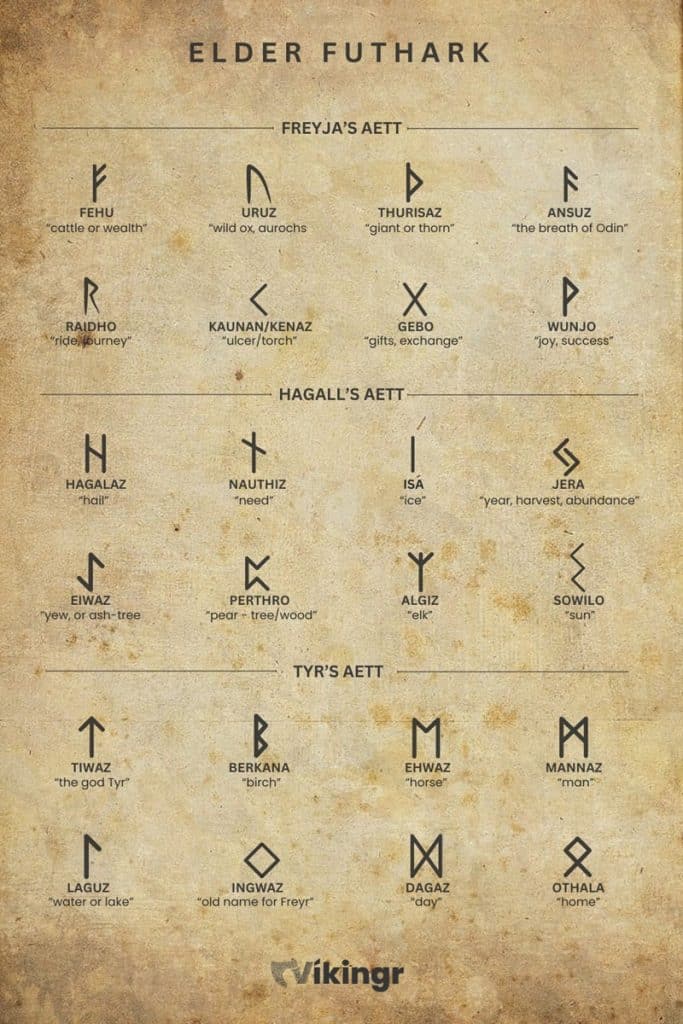In this post, we’ll be journeying once more into the world of the Vikings and their enigmatic runic system, the Elder Futhark. Our focus? The thirteenth rune in this ancient alphabet, Eiwaz, a symbol of resilience and transformation.
Eiwaz: Background and Description
Let’s start at the beginning, with the Elder Futhark, the oldest form of the runic alphabets. Eiwaz, the thirteenth rune in this sequence, following the harvest rune Jera and precedes the mysterious cup rune Perthro. The name comes from Old Norse, translating roughly to “yew,” a type of tree.
The Elder Futhark, the archaic runic system that Eiwaz belongs to, was extensively used throughout Europe. From the frosty realms of Scandinavia to the green lands of Britain, and even reaching the sunlit coasts of Italy, these runes made their mark. Eiwaz, standing thirteenth in this sequence, has been found etched on grand runestones and common everyday items alike, a testament to its widespread use and significance.
The etymology of “Eiwaz” is intriguing. Rooted in the Proto-Germanic “*īhwaz,” it’s associated with the yew tree, a symbol of resilience and transformation in many cultures. This gives us a glimpse into the mindset of the ancient Germanic peoples, showing us that they valued resilience and transformation in their lives.

Graphical Representation
Visually, Eiwaz is a simple yet elegant rune. It’s composed of one long vertical line, with two short horizontal lines, angled ever so slightly inwards towards the horizont. The top short “twig” goes to the right and the bottom short “twig” goes to the left.
Like almost all runes, variations of Eiwaz’s design have been found. Some inscriptions show the rune with a more curved diagonal line or with additional lines. However, the traditional form remains the most recognized and used.
Phonetic Value
In the Proto-Germanic language, Eiwaz represented the sound “ei,” as in “eight.” As Germanic languages evolved, so did the pronunciation of this rune. In Old Norse, for example, it was pronounced as a “y.”
Symbolic Meaning of the Eiwaz Rune
Now, let’s delve into the symbolic heart of Eiwaz. This rune is traditionally associated with the yew tree, a symbol of resilience, transformation, and connection between life and death. It represents the cycle of life, death, and rebirth, and the resilience needed to navigate these transitions.
The rune is also linked to Yggdrasil, the World Tree in Norse mythology, which is often depicted as a yew or ash tree. It’s a reminder of the interconnectedness of all things and the cyclical nature of existence.

The Guardian God Heimdall, is a central figure in Norse mythology, embodying vigilance, loyalty, and the connection between the gods and humans. Eiwaz, with its associations with the World Tree and the cycle of life, reflects these themes, offering a glimpse into the values and beliefs of the ancient Germanic peoples.
The Aett and its Symbolism
Eiwaz belongs to the second aett of the Elder Futhark, a group of eight runes associated with the god Heimdall. This aett, or family of runes, carries themes of resilience, transformation, and the cyclical nature of life.
Heimdall, the Guardian God, is a central figure in this aett. Known for being vigilant and loyal, he is a perfect match with the themes of Eiwaz.

Elder Futhark Quiz
Do you want to test your knowledge of Elder Futhark runes? Then this quiz is perfect for you!
Don’t forget to play our other games as well!
Eiwaz Used in Divination and Magic
Now, I must preface this by saying that I don’t personally believe in divination or seidr magic. However, I find the historical and cultural aspects of these practices fascinating, and they’re certainly popular among many people today.
In runic divination, Eiwaz is often interpreted as a sign of transformation or a necessary change. It’s seen as a call to face challenges head-on, with the promise of growth and development on the other side.
Historically, Eiwaz was most likely used in runic spells and divination related to protection or transformation. The yew tree’s association with death and rebirth could have made this rune a powerful symbol in such practices.
Frequently Asked Questions
Eiwaz symbolizes transformation, resilience, and the cycle of life, death, and rebirth. It’s associated with the yew tree and the World Tree, Yggdrasil.
In divination, Eiwaz is often seen as a sign of necessary change or transformation. It suggests facing challenges with resilience and the promise of growth on the other side.
In the Proto-Germanic language, Eiwaz represented the sound “ei,” similar to the “y” in “yew.”
Eiwaz belongs to the second aett of the Elder Futhark, known as the Hagall’s aett, associated with the god Heimdall.
Featured Image Credit: BK, Public domain, via Wikimedia Commons
